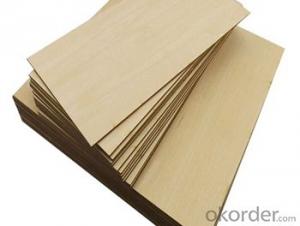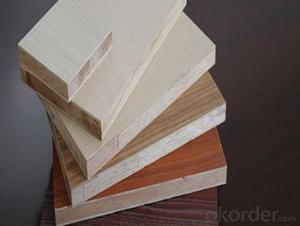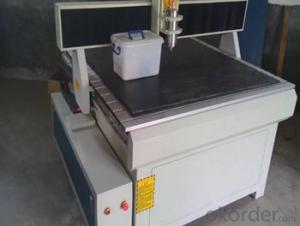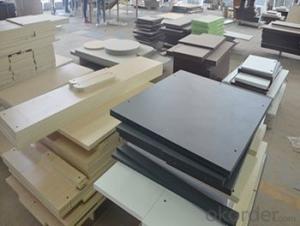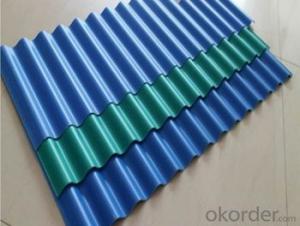FRP pultruded grating with Anti-flammable and high quality for sales of new design
- Loading Port:
- Tianjin
- Payment Terms:
- TT OR LC
- Min Order Qty:
- 1 m.t.
- Supply Capability:
- 100000 m.t./month
OKorder Service Pledge
OKorder Financial Service
You Might Also Like
PRODUCT DESCRIPTION
Pultruded grating is made by a particular assembly process, which using “I” shape as its main load-bearing and special rod to go through the bearing bar. Pultruded grating include the standard grating and the custom grating, the custom grating can be designed to meet customer’s requirement or special using condition by changing the shape, size and space of the bearing bars, the surface can be covered with lozenge panel, grit panel, or added the anti-slippery sand directly.
FRP pultruded grating has the most characteristics of molded grating, but it has its distinct advantages, it has very high fiberglass content in the loading direction, so it has very high load capability, it has more superiority when used at wide span, so that the basic support will be decreased and the project cost will be reduced accordingly.
SPECIFICATION
Thickness (mm) | Bar width (mm) | Open space (mm) | Open rate (%) | Approx weight (kg/m |
25.4 | 15.2 | 22.8 | 60 | 13.2 |
25.4 | 15.2 | 15.2 | 50 | 15.9 |
25.4 | 15.2 | 10.1 | 40 | 18.5 |
25.4 | 40 | 10.8 | 21 | 14.5 |
38.1 | 15.2 | 22.8 | 60 | 15.8 |
38.1 | 15.2 | 15.2 | 50 | 19.1 |
38.1 | 15.2 | 10.1 | 40 | 22.4 |
50.8 | 25.4 | 25.4 | 50 | 16.6 |
50.8 | 25.4 | 12.7 | 33 | 21.1 |
CHOICE FOR PULTRUDED GRATING
Resin: GP resin, ISO resin, VE resin, Phenol resin
Color choice: Yellow, gray, green, custom color
Surface choice: Groove surface, grit surface, lozenge cover surface
FEATURES
a. Anti-corrosion and anti-rust
b. Light weight and high strength
c. Anti-flammable
d. Anti- fatigue
e. Safe and anti-slippery
f. Anti-ageing
g. Easy of maintenance
h. Excellent electromagnetism property
i. Good economic benefit
FIELDS SERVED
Sewage treatment,
water supply and drainage,
chemical industry,
oil industry,
power engineering,
pulp and paper,
construction engineering,
spinning, marine engineering.
COMPANT DESCRIPTION
CNBM,China National Building Materials Group is a state-owned enterprise in charge of administrative affairs in china building materials industry. Established in 1984, CNBM is a large group corporation of building materials with total assets of 25 billion RMB and a total staff of 30,000.CNBM now owns 200 subordinating firms of solely owned and joint-venture companies.
CNBM International Corporation is one subsidiary of CNBM, we focus on offering good-quality products,professional service and complete solution to our customers. Strong delivery capacity, advanced technology& management, strong financing capability and excellent after-sale service are our advantages in sharing international market.
FAQ
1.Q:Are you factory or trading company ?
A:We are Factory produce FRP machines and FRP products.
2.Q:If can customized by customers requirements?
A:yes,we can produce the machine with customized size.
3.Q:How about the payment?
A:We accept any kind of payment.
4.Q:What is the guarantee?
A:Gurantee is one year.
5.Q:If you can training?
A:yes ,we can training in our factory also can send engineers to your factory training.
PICTURES

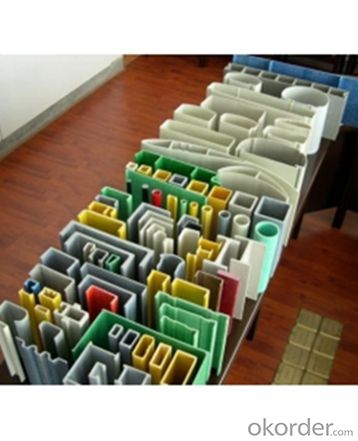
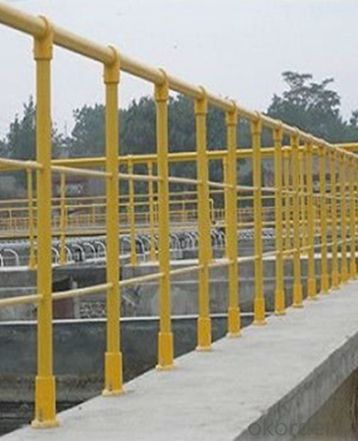
- Q:Are FRP pultrusion profiles resistant to high winds or hurricanes?
- FRP pultrusion profiles offer exceptional resistance against high winds and hurricanes. Combining the robustness of fiberglass with the longevity of polymers, FRP is a lightweight yet remarkably sturdy material that can endure severe weather conditions. Extensive testing has proven that FRP pultrusion profiles exhibit outstanding wind resistance properties. They possess a remarkable stiffness-to-weight ratio, enabling them to withstand the powerful forces generated by high winds without deformation or breakage. Additionally, the inherent flexibility of FRP permits it to absorb and distribute wind forces, minimizing the risk of damage. In the face of hurricanes, FRP pultrusion profiles have demonstrated their capability to withstand the intense winds and airborne debris associated with such extreme weather events. They have been successfully employed in various applications, including building facades, bridges, and utility poles, in areas prone to hurricanes. Moreover, FRP pultrusion profiles possess corrosion resistance, providing an extra advantage in withstanding high winds and hurricanes. Unlike traditional materials like steel or wood, FRP profiles do not rust or decay when exposed to moisture, making them even more suitable for these demanding weather conditions. Overall, with their exceptional strength, durability, flexibility, and corrosion resistance, FRP pultrusion profiles are an excellent choice for applications requiring resistance against high winds or hurricanes.
- Q:How do FRP pultrusion profiles handle cyclic torsion loads?
- FRP pultrusion profiles have been carefully designed to effectively handle cyclic torsion loads. The exceptional properties of FRP materials make them highly resistant to fatigue, which makes them perfectly suitable for applications where cyclic torsion loads are anticipated. A significant advantage of FRP pultrusion profiles lies in their remarkable strength-to-weight ratio. By reinforcing them with fibers like glass or carbon, these profiles exhibit outstanding tensile strength and stiffness, enabling them to withstand repeated torsional forces without any deformation or failure. Furthermore, FRP pultrusion profiles display superior resistance to corrosion and chemical degradation when compared to traditional materials like steel. This resistance guarantees that the profiles maintain their structural integrity even in harsh environments where cyclic torsion loads might be prevalent. The pultrusion manufacturing process also contributes to the capability of FRP profiles to handle cyclic torsion loads. During pultrusion, continuous fibers are impregnated with a polymer resin and then drawn through a heated die, where they are cured and shaped into the desired profile. This process ensures a uniform distribution of fibers throughout the profile, resulting in enhanced strength and stiffness in all directions, including torsion. To further enhance the performance of FRP pultrusion profiles under cyclic torsion loads, engineers utilize design techniques such as optimizing the fiber orientation and selecting suitable resin systems. These measures help evenly distribute the torsional forces across the profile, reducing stress concentrations and enhancing fatigue resistance. In conclusion, FRP pultrusion profiles have been specifically engineered to handle cyclic torsion loads. Their remarkable strength-to-weight ratio, corrosion resistance, and uniform fiber distribution make them an ideal choice for applications where cyclic torsion loads are a concern.
- Q:How do FRP pultrusion profiles perform in high-humidity environments?
- FRP pultrusion profiles perform exceptionally well in high-humidity environments. The inherent properties of fiberglass reinforced plastic, such as corrosion resistance and moisture resistance, make these profiles highly durable and resistant to degradation caused by exposure to moisture and humidity. Additionally, FRP pultrusion profiles do not rot, warp, or rust, making them an ideal choice for applications in high-humidity environments.
- Q:Are FRP pultrusion profiles resistant to impact from flying debris?
- FRP (Fiber Reinforced Polymer) pultrusion profiles are known for their high strength and durability. They are generally resistant to impact from flying debris due to their inherent properties. The combination of the reinforcing fibers, typically made of fiberglass, and the polymer matrix provides excellent impact resistance. The specific resistance to impact from flying debris can vary depending on the specific design, thickness, and composition of the FRP pultrusion profiles. However, in most cases, these profiles are designed to withstand impact forces and can effectively resist damage caused by flying debris. Furthermore, FRP pultrusion profiles are often used in applications where impact resistance is crucial, such as in construction, transportation, and infrastructure industries. These profiles have been tested and proven to withstand various impact scenarios, making them a reliable choice for applications where flying debris is a concern. It is important to note that while FRP pultrusion profiles offer good impact resistance, the severity of the impact and the velocity of the flying debris can still affect the level of damage. Therefore, it is advisable to consult with the manufacturer or engineer to ensure the specific FRP profile chosen is suitable for the intended application and potential impact conditions.
- Q:Do FRP pultrusion profiles require any special tools for installation?
- Yes, FRP pultrusion profiles do require special tools for installation. These tools typically include saws for cutting the profiles to size, drills for creating holes, and adhesive application tools for bonding the profiles to the substrate. Additionally, specialized fasteners and brackets may be needed to secure the profiles in place. It is important to use these tools correctly to ensure a proper and secure installation of FRP pultrusion profiles.
- Q:Can FRP pultrusion profiles be used in the construction of railway sleepers?
- Yes, FRP (Fiber Reinforced Polymer) pultrusion profiles can be used in the construction of railway sleepers. FRP pultrusion profiles offer several advantages that make them suitable for this application. Firstly, FRP pultrusion profiles are lightweight yet strong, making them ideal for railway sleepers. They have high strength-to-weight ratios and can withstand heavy loads, making them a reliable choice for supporting the weight of trains. Additionally, the lightweight nature of FRP profiles makes them easier to transport and install, reducing construction time and costs. Secondly, FRP pultrusion profiles are highly resistant to corrosion, which is a crucial factor for railway sleepers. Traditional materials such as wood or steel are susceptible to corrosion when exposed to moisture and chemicals. FRP profiles, on the other hand, are non-corrosive and do not require regular maintenance or replacement due to rust or decay. Furthermore, FRP pultrusion profiles offer excellent durability and longevity. They are resistant to UV radiation, extreme temperatures, and chemicals, ensuring a longer lifespan compared to traditional materials. This reduces the need for frequent replacements, resulting in lower maintenance and lifecycle costs. Moreover, FRP pultrusion profiles can be customized to meet specific design requirements. They can be manufactured in various shapes and sizes to fit different railway sleeper designs, offering flexibility in construction. Additionally, they can be made in different colors, allowing for aesthetic customization. Lastly, FRP pultrusion profiles offer excellent electrical insulation properties. This is crucial for railway sleepers, as they need to provide insulation between the train tracks and the ground to prevent electrical interference and ensure safe operation. In conclusion, FRP pultrusion profiles are a suitable choice for the construction of railway sleepers due to their lightweight, high strength, corrosion resistance, durability, customization options, and electrical insulation properties.
- Q:Are FRP pultrusion profiles resistant to moisture absorption?
- Yes, FRP pultrusion profiles are highly resistant to moisture absorption. The inherent properties of the fiberglass and resin used in pultrusion manufacturing make the profiles highly durable and impervious to moisture, ensuring long-term performance and minimal structural damage.
- Q:Are FRP pultrusion profiles resistant to jet fuel?
- Yes, FRP pultrusion profiles are generally resistant to jet fuel.
- Q:Are FRP pultrusion profiles resistant to fungi and mold?
- FRP pultrusion profiles exhibit a general resistance to fungi and mold. This is attributed to the non-porous qualities of the construction materials, namely fiberglass and epoxy resins. These materials create an inhospitable environment for fungi and mold, thus establishing a high level of resistance against their proliferation and colonization. Moreover, FRP pultrusion profiles possess inherent moisture resistance, adding another deterrent to fungi and mold growth. In contrast to wood and its propensity to absorb moisture, FRP profiles do not retain water, rendering them highly resistant to these concerns. The combination of impermeable materials and moisture resistance make FRP pultrusion profiles an ideal choice for environments necessitating fungi and mold resistance, particularly those with high humidity or dampness. However, it is important to acknowledge that no material is entirely impervious to fungi and mold growth in all circumstances. In extreme conditions characterized by prolonged exposure to substantial levels of moisture and organic matter, there remains a possibility for some fungi and mold to colonize FRP profiles. Nevertheless, when compared to alternative materials, FRP pultrusion profiles offer a significantly superior level of resistance against these challenges.
- Q:What are the quality control measures for FRP pultrusion profiles?
- Quality control measures for FRP pultrusion profiles involve a series of steps and processes to ensure the products meet the desired standards. These measures include: 1. Raw material inspection: The first step is to verify the quality of the raw materials used in the pultrusion process. This includes checking the properties and specifications of the fiberglass, resin, additives, and other components. 2. Process control: Throughout the pultrusion process, various parameters need to be monitored and controlled. This includes maintaining consistent temperature, pressure, and resin content during the impregnation, forming, and curing stages. 3. Sample testing: Regular sampling is conducted during production to assess the quality of the profiles. These samples are tested for mechanical properties, dimensional accuracy, and surface finish to ensure they meet the required standards. 4. Visual inspection: Each profile is visually inspected to identify any defects, such as cracks, voids, delamination, or surface imperfections. Visual inspection helps to identify any irregularities that may affect the structural integrity or aesthetics of the profiles. 5. Mechanical testing: Profiles are subjected to mechanical testing to assess their strength, stiffness, and other mechanical properties. This involves conducting tests like flexural testing, tensile testing, impact testing, and compression testing. The results are compared to the specified requirements to determine if the profiles meet the necessary standards. 6. Quality documentation: Proper documentation is maintained throughout the manufacturing process, including records of raw material specifications, process parameters, test results, and inspection reports. This ensures traceability and provides a reference for quality assurance. 7. Non-destructive testing: In addition to mechanical testing, non-destructive testing techniques, such as ultrasonic testing or X-ray inspection, may be used to identify internal defects or inconsistencies without damaging the profiles. 8. Quality audits: Regular internal and external audits are conducted to assess the effectiveness of the quality control measures and ensure compliance with relevant industry standards and regulations. By implementing these quality control measures, manufacturers can ensure that FRP pultrusion profiles meet the required specifications, resulting in reliable and high-quality products.
1. Manufacturer Overview |
|
|---|---|
| Location | |
| Year Established | |
| Annual Output Value | |
| Main Markets | |
| Company Certifications | |
2. Manufacturer Certificates |
|
|---|---|
| a) Certification Name | |
| Range | |
| Reference | |
| Validity Period | |
3. Manufacturer Capability |
|
|---|---|
| a)Trade Capacity | |
| Nearest Port | |
| Export Percentage | |
| No.of Employees in Trade Department | |
| Language Spoken: | |
| b)Factory Information | |
| Factory Size: | |
| No. of Production Lines | |
| Contract Manufacturing | |
| Product Price Range | |
Send your message to us
FRP pultruded grating with Anti-flammable and high quality for sales of new design
- Loading Port:
- Tianjin
- Payment Terms:
- TT OR LC
- Min Order Qty:
- 1 m.t.
- Supply Capability:
- 100000 m.t./month
OKorder Service Pledge
OKorder Financial Service
Similar products
New products
Hot products
Related keywords
